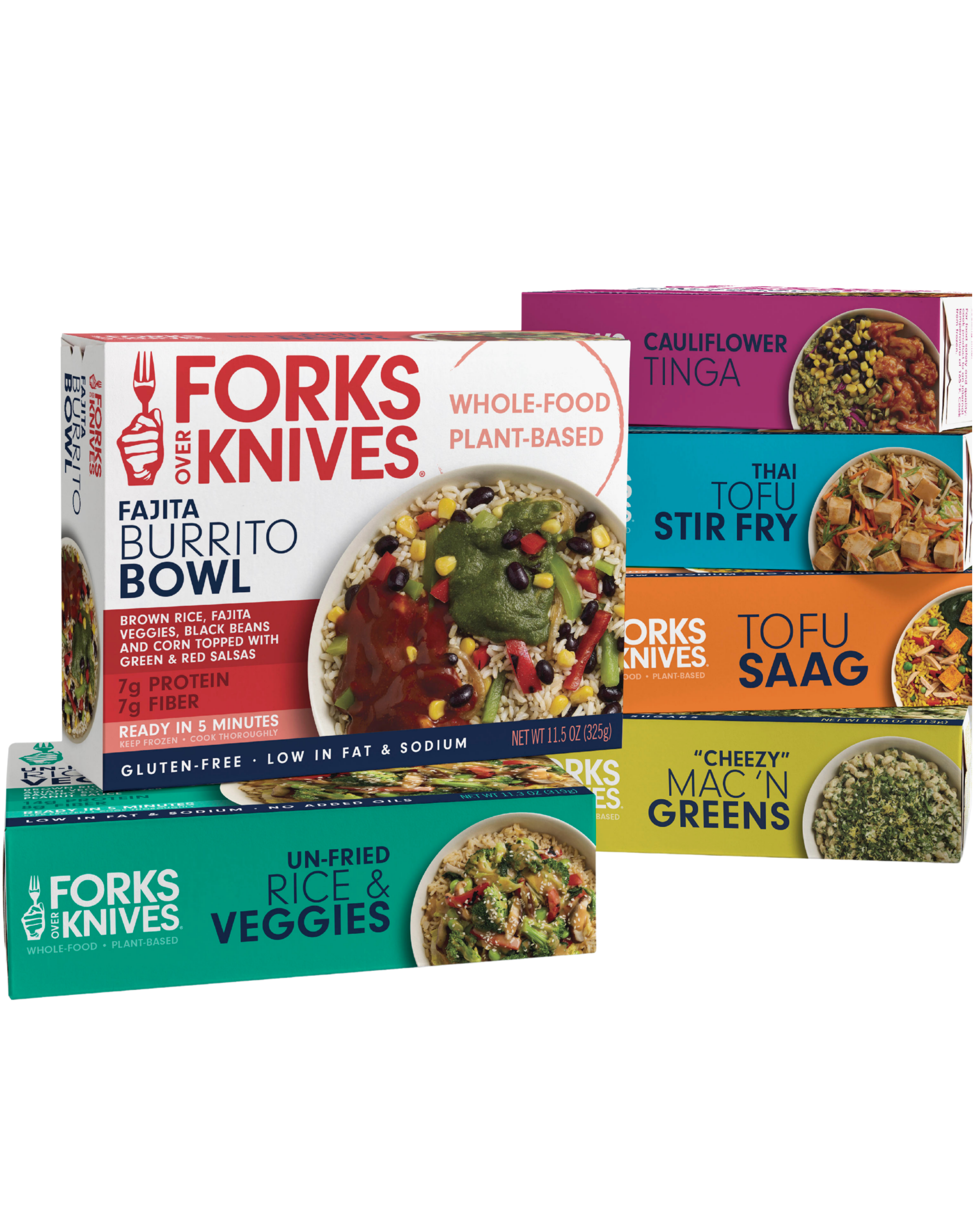“Antioxidants” is one of the biggest—and most misunderstood—buzzwords in the world of health and wellness. When everything from food packaging to recipe blogs tout the life-changing benefits of antioxidants, it can be hard to distinguish the facts from the hype. Our no-nonsense guide is here to bust the biggest myths surrounding this buzzword, explain the most up-to-date scientific evidence, and give you a better understanding of how antioxidants factor into a healthy diet.
In this article you’ll learn:
- What Are Antioxidants?
- Which Foods Have The Most Antioxidants?
- Is Taking Antioxidant Supplements Good For You?
- Do You Need to Eat “Superfoods” to Be Healthy?
- Can Antioxidants Reverse Aging?
- 10 Antioxidant-Rich Recipes
What Are Antioxidants?
The term “antioxidant” refers to a substance's ability to neutralize the effects of oxidation caused by unstable molecules known as free radicals. These molecules are a natural byproduct of cell metabolism, but an imbalance of free radicals can lead to cellular damage through oxidative stress. While it’s common to think of antioxidants as a specific nutrient, it’s actually more of a blanket term that refers to the oxidation-inhibiting capabilities of hundreds of different micronutrients in foods.
“Oxidation is a normal process,” explains UK-based hematologist Shireen Kassam, MBBS, DipIBLM, PhD. “[It] refers to a loss of electrons by a molecule. The opposite reaction is called reduction, which is the gain of electrons. These processes are usually in balance and play a crucial role in normal cellular metabolism. An imbalance between oxidation and reduction can give rise to the formation of reactive oxygen species (ROS). During times of stress, ROS levels can rise dramatically and result in tissue damage through oxidative stress, which alters proteins, DNA, and cell membranes.”
A free radical has an uneven number of electrons in its outer orbit, which means it can easily bond with other atoms and form molecular chain reactions that ultimately cause cellular damage. To counter this, antioxidants give up some of their electrons to free radicals to restore molecular balance and bring rates of oxidative stress back to equilibrium.
Various environmental and lifestyle factors—such as inflammation; intense exercise; and exposure to air pollution, ultraviolet light, pesticides, and cigarette smoke—can lead to increased rates of oxidative stress. Chronic oxidative stress has been linked to heart disease, cancer, arthritis, Parkinson’s disease, stroke, and respiratory diseases.
Where Do Antioxidants Come From?
Your body naturally produces some antioxidants as the first line of defense against free radicals, but the majority of antioxidants in your system come from the food you eat. In order to protect themselves from ultraviolet light, plants produce antioxidants to counteract the free radicals created in their cells during photosynthesis. When we eat those plants, we absorb those same antioxidants. There are hundreds of different types of antioxidants in food, such as vitamin C and vitamin E, and they all support the health of different bodily functions.
A 2010 analysis published in Nutrition Journal looked at the antioxidant composition of more than 3,100 foods, beverages, spices, and herbs to determine which offered the most protection against oxidative stress. The researchers found that “plant-based foods introduce significantly more antioxidants into the human diet than non-plant foods.” In other words, fruits, veggies, nuts, seeds, and whole grains have far richer antioxidant compositions than meat, dairy, eggs, and processed foods.
“Some compounds within animal-derived foods, such as heme iron (found in hemoglobin and myoglobin in meat) are pro-oxidants, creating oxidative stress and contributing to cellular damage,” says Kassam.
Which Foods Have the Most Antioxidants?
There are hundreds of phytochemicals (aka plant chemicals) that have antioxidant properties, and most plants contain a combination of many different antioxidants. Instead of focusing on a single type of antioxidant, it’s important to consume a wide range of fruits and veggies to get the full spectrum of vitamins, minerals, phytonutrients, and antioxidants that your body needs to flourish.
For example, eating a huge quantity of carrots to support your eye health won’t be very effective without a full range of antioxidants supporting the other processes of your body. There’s no “quick fix” when it comes to antioxidants and diet: You can’t just eat one type of fruit or vegetable and expect it to cure an ailment or disease. If a broad spectrum of antioxidants is prioritized through a well-rounded diet, your body will experience less oxidative stress, which could lead to lower rates of disease over time.
If you’re trying to integrate more nutrient-dense foods into your diet, Kassam has a key piece of advice for getting started. “The darker the color of the plant foods, the higher the antioxidant content,” she explains. “So a red onion will have more antioxidants than a white onion, and red rice more than white rice.”
Some of the most common antioxidants and the foods they’re found in:
- Vitamin A and beta-carotene: Support healthy vision, growth, cell division, and immunity
- Found in mangos, papaya, squash, carrots, sweet potatoes, and corn
- Vitamin C: Supports the body’s healing process and formation of blood vessels, cartilage, muscle, and collagen
- Found in most fruits and vegetables, especially berries, citrus, and bell peppers
- Vitamin E: Supports the health of your blood, brain, and skin
- Found in almonds, peanuts, leafy greens, asparagus, and sunflower seeds
- Polyphenols: Support digestion, brain health, and reduce inflammation
- Artichokes, black beans, tempeh, asparagus, berries, oats, whole wheat,and spices
- Lycopene: Supports the balance of free radicals in the body
- Found in pink, orange, and red produce, including tomatoes, watermelon, and red peppers
- Lutein: Supports healthy vision and decreases inflammation
- Found in leafy greens, corn, papaya, and oranges
- Selenium: Supports DNA production and thyroid metabolism, and protects against infections
- Found in rice, corn, wheat, and other whole grains, as well as nuts and legumes
- Manganese: Supports connective tissue, sex hormones, and bone health
- Found in tofu, sweet potatoes, brown rice, spinach, pineapple, chickpeas, and lentils
- Zeaxanthin: Supports eye health and protects against UV damage
- Found in kale, spinach, broccoli, peas, honeydew melon, grapes, and corn
Common Myths About Antioxidants
From smoothing facial wrinkles to boosting your performance at the gym, antioxidants are often glamorized as a “fix-all” solution to the complex (and often unavoidable) deterioration of our cells as we age. And while at first glance it may seem that eating more antioxidants will ensure less oxidative stress, it’s not a simple case of “more is better”; in fact, many studies have even shown the opposite to be true. Let’s take a closer look at three of the most common myths surrounding antioxidants.
Myth #1: Antioxidant Supplements Positively Impact Your Health
If you’re trying to ingest a full range of antioxidants to maximize your body’s ability to fight oxidative stress, it might seem logical to reach for an antioxidant supplement. However, synthetically derived or extracted antioxidants sold in pill form have been proven many times to provide no benefit or to even increase the risk of chronic disease.
The National Cancer Institute summarized the results of nine randomized clinical trials that studied whether antioxidant supplements impacted the risk of cancer development and death. While most of the trials showed that supplements had no effect on cancer risk, a few trials reported increased rates of cancer around beta-carotene supplements. Only two trials showed decreased cancer rates in the initial stages of the studies, but both reported no effect on cancer risk in post-trial follow-up periods.
A 2014 paper published in Frontiers in Physiology also warns against the overuse of antioxidant supplements due to potential immunosuppressant effects, which could restrict healthy levels of inflammation needed for the body to fight off infections. Additionally, a 2014 study in the Journal of Physiology found that taking vitamin C and E supplements after endurance training hindered cellular adaptation known to improve athletic performance.
Overall, the science shows antioxidant supplements provide no significant benefits, and may even cause negative side effects. Supplements don’t contain the same spectrum of micronutrients found in the foods we eat, which work alongside antioxidants to maximize their beneficial properties.
Myth #2: You Need to Eat ‘Superfoods’ to Be Healthy
Another big buzzword in the wellness community is “superfoods,” which implies that some foods have extra antioxidants or special health benefits. The concept of superfoods is little more than a marketing tactic. No single food can provide all the key nutrients you need to live a healthful life or magically clear your body of excess free radicals. While some plants have high concentrations of specific vitamins or minerals, their health-boosting benefits likely work in conjunction with the full range of nutrients that are essential to good health.
“There is no such thing as a superfood,” Kassam says. “The key to good health is to eat a variety of healthy plant foods, including fruit, vegetables, whole grains, beans, nuts, and seeds every day. Research suggests that aiming for 30 different types of plant foods a week (including herbs and spices) can support better gut health, and therefore overall health.”
Myth #3: Antioxidants Can Turn Back the Clock
One of the most common claims about antioxidants is that they can slow (or even reverse) the aging process. This theory was first put forward in 1955 by scientist Denham Harman, who proposed the idea that oxidative stress is the key component behind age-related deterioration. A 2008 study published in Genes & Development looked at the impact of oxidative stress on nematode worms and found their lifespans were unaffected even after researchers altered the worms’ genes to absorb free radicals at a much higher rate than usual—suggesting that oxidation is not the only factor that causes molecular damage.
The Bottom Line: Eat a Well-Rounded Diet
The best way to get your healthy share of antioxidants is to focus on eating a variety of whole plant foods. “Studies consistently show that people eating a predominantly or exclusively plant-based diet have higher levels of antioxidants in the body compared to omnivores,” says Kassam.
Colorful fruits and veggies are great sources of antioxidants and other vital nutrients, so be sure to cook with a range of produce alongside whole grains, nuts, seeds, and spices.
Studies have found that, in addition to having higher levels of antioxidants, people who eat predominantly plant-based are at lower risk of Type 2 diabetes, heart disease, obesity, and certain types of cancer.
“We can thrive on a 100% plant-based diet,” Kassam concludes.
10 Antioxidant-Rich Recipes
FOK recipes are all focused on whole plant foods and are a great source of antioxidants. Here are some of our favorite recipes that feature a colorful and wide variety of antioxidant-rich ingredients to support good health:
- Hearty Kale Salad with Warm Citrus and Wheat Berries
- Broccoli and Brown Rice Casserole with Chickpeas
- Wild Mushroom Vegan Pho
- Sweet Potato Shawarma
- Red Cabbage Salad with Orange, Cranberries, and Walnuts
- Thai Basil Eggplant
- Peach and Pepper Tacos
- Barbecue Stuffed Sweet Potatoes with Smoky Jackfruit
- Creamy Carrot Soup
- Spicy Collard Slaw
Related News
Get Our Best Price On The Forks Meal Planner

Forks Meal Planner takes the guess work out of making nutritious meals the whole family will enjoy.
Master Plant-Based Cooking!

Our new course features over 100 lessons, 50+ recipes, downloadable guides, and more!
New Frozen Meals!

Introducing our new frozen meals: Doctor-recommended, chef-crafted, & ready in minutes.




